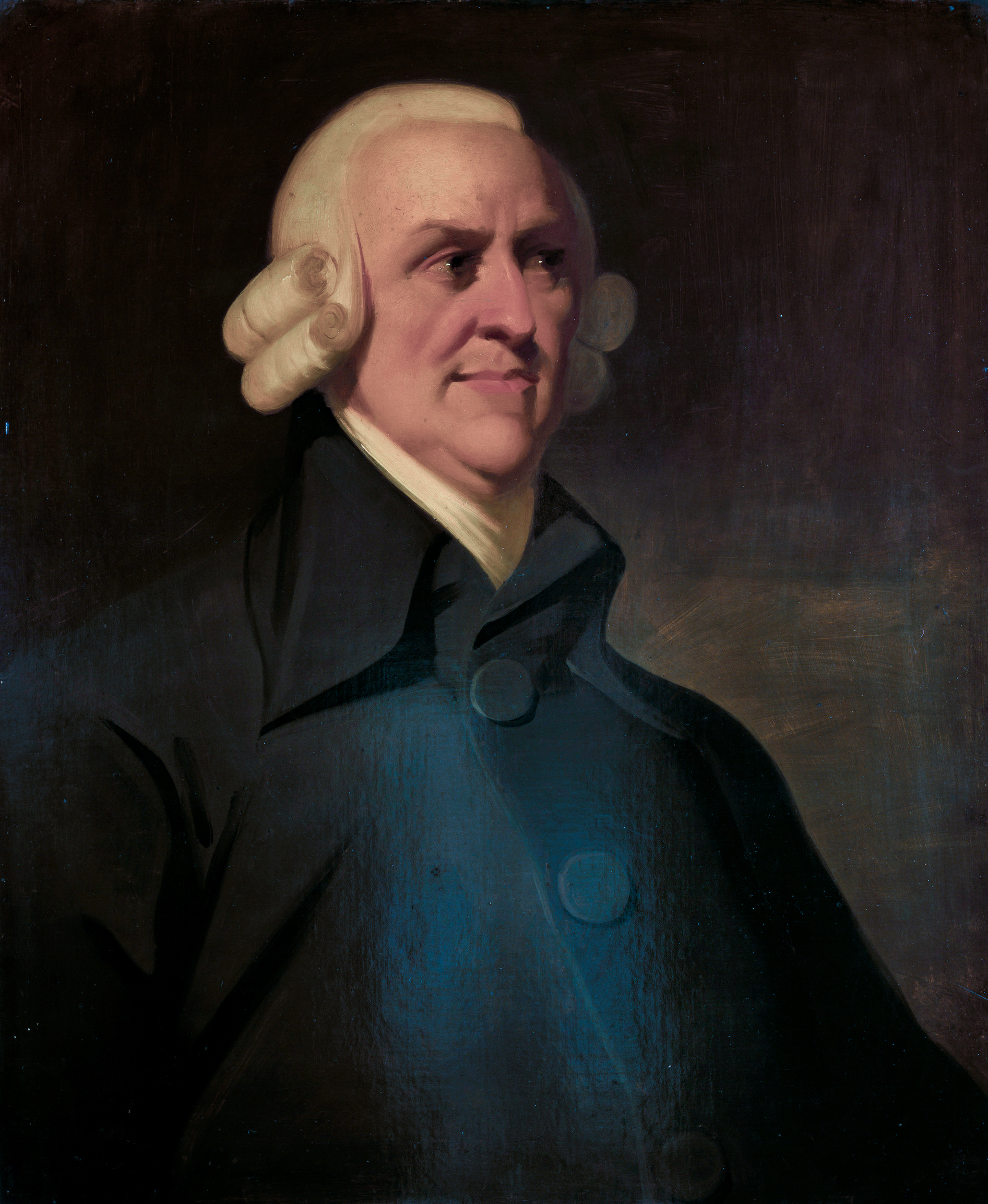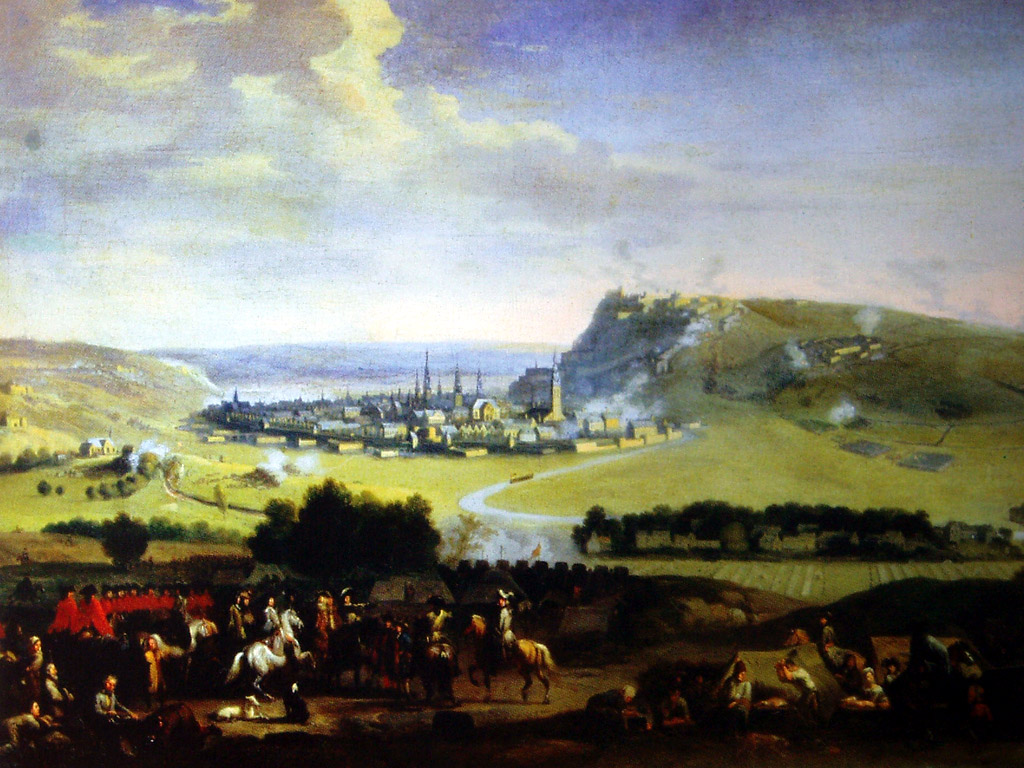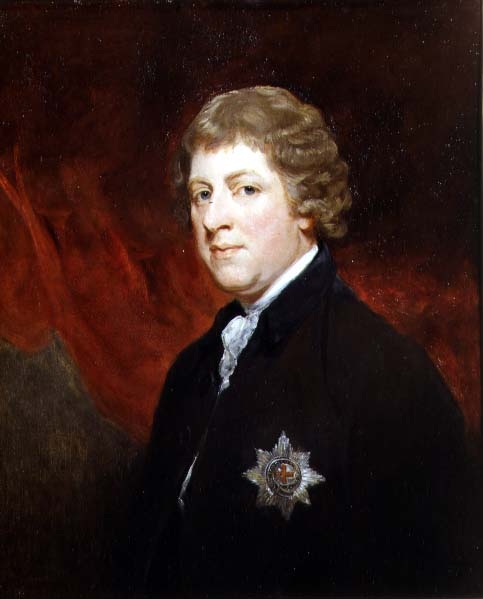|
Anthony Grey, Earl Of Harold
Anthony Grey, 3rd Baron Lucas, styled Earl of Harold (21 February 1695 – 21 July 1723) was a British peer and courtier. Biography Grey was the eldest son of Henry Grey, 1st Duke of Kent, and his wife, Jemima Crew. On 17 February 1718, Anthony married Lady Mary Tufton, a daughter and coheiress of Thomas Tufton, 6th Earl of Thanet, by his wife Lady Catharine Cavendish. He was called to the House of Lords, by writ of acceleration in his father's barony of Lucas, on 8 November 1718. Lord Harold was a Lord of the Bedchamber to George, Prince of Wales, later King George II, from 1720 until his death in 1723, aged 28, from choking on an ear of barley, the beard of which stuck in his throat. He had no children,Sir Bernard Burke, C.B. LL.D., A Genealogical History of the Dormant, Abeyant, Forfeited, and Extinct Peerages of the British Empire, new edition (1883; reprint, Baltimore, Maryland: Genealogical Publishing Company, 1978), page 11. so his title reverted to his father and hi ... [...More Info...] [...Related Items...] OR: [Wikipedia] [Google] [Baidu] |
Henry Grey, 1st Duke Of Kent
Henry Grey, 1st Duke of Kent, Order of the Garter, KG, Privy Council of England, PC (16715 June 1740) was a British politician and courtier. None of his sons outlived him, so his new title became extinct on his death. Though the house he built at Wrest Park in Bedfordshire has gone, parts of his very grand garden have survived relatively untouched. Family He was a son of Anthony Grey, 11th Earl of Kent, and Mary Grey, 1st Baroness Lucas of Crudwell. He succeeded his father as 12th Earl of Kent in 1702, having succeeded his mother as 2nd Baron Lucas earlier the same year. He was the grandfather, through his daughter Lady Mary Gregory, Anne Grey, of Henry Cavendish, the preeminent English chemist and physicist of the late 18th century. Political career Having taken his seat in the House of Lords and though regarded as lacking talent and ambitionPhilip Carter, 'Grey, Henry, duke of Kent', ''Oxford Dictionary of National Biography'', Oxford University Press, 2004 he, as the polit ... [...More Info...] [...Related Items...] OR: [Wikipedia] [Google] [Baidu] |
Barley
Barley (), a member of the grass family, is a major cereal grain grown in temperate climates globally. It was one of the first cultivated grains; it was domesticated in the Fertile Crescent around 9000 BC, giving it nonshattering spikelets and making it much easier to harvest. Its use then spread throughout Eurasia by 2000 BC. Barley prefers relatively low temperatures and well-drained soil to grow. It is relatively tolerant of drought and soil salinity, but is less winter-hardy than wheat or rye. In 2023, barley was fourth among grains in quantity produced, 146 million tonnes, behind maize, rice, and wheat. Globally, 70% of barley production is used as animal feed, while 30% is used as a source of fermentable material for beer, or further distilled into whisky, and as a component of various foods. It is used in soups and stews and in barley bread of various cultures. Barley grains are commonly made into malt using a traditional and ancient method of preparatio ... [...More Info...] [...Related Items...] OR: [Wikipedia] [Google] [Baidu] |
Burials At The De Grey Mausoleum (Flitton)
Burial, also known as interment or inhumation, is a method of final disposition whereby a dead body is placed into the ground, sometimes with objects. This is usually accomplished by excavating a pit or trench, placing the deceased and objects in it, and covering it over. A funeral is a ceremony that accompanies the final disposition. Evidence suggests that some archaic and early modern humans buried their dead. Burial is often seen as indicating respect for the dead. It has been used to prevent the odor of decay, to give family members closure and prevent them from witnessing the decomposition of their loved ones, and in many cultures it has been seen as a necessary step for the deceased to enter the afterlife or to give back to the cycle of life. Methods of burial may be heavily ritualized and can include natural burial (sometimes called "green burial"); embalming or mummification; and the use of containers for the dead, such as shrouds, coffins, grave liners, and burial ... [...More Info...] [...Related Items...] OR: [Wikipedia] [Google] [Baidu] |
Deaths From Choking
Death is the end of life; the Irreversible process, irreversible cessation of all biological process, biological functions that sustain a living organism. Death eventually and inevitably occurs in all organisms. The remains of a former organism normally begin to Decomposition, decompose shortly after death. Some organisms, such as ''Turritopsis dohrnii'', are Biological immortality, biologically immortal; however, they can still die from means other than Senescence, aging. Death is generally applied to whole organisms; the equivalent for individual components of an organism, such as Cell (biology), cells or Tissue (biology), tissues, is necrosis. Something that is not considered an organism, such as a virus, can be physically destroyed but is not said ''to die'', as a virus is not considered alive in the first place. As of the early 21st century, 56 million people die per year. The most common reason is aging, followed by cardiovascular disease, which is a disease that af ... [...More Info...] [...Related Items...] OR: [Wikipedia] [Google] [Baidu] |
Accidental Deaths In England
Accidental may refer to: * Accidental (music), a symbol which changes the pitch of a note * ''Accidental'' (album), by Fred Frith * Accidental (biology), a biological phenomenon more commonly known as vagrancy * '' The Accidental'', a 2005 novel by Ali Smith * The Accidental (band), a UK folk band * Accidental property, a philosophical term See also * Accidence (or inflection), a modification of a word to express different grammatical categories * Accident (other) * Adventitious, which is closely related to "accidental" as used in philosophy and in biology * Random, which often is used incorrectly where ''accidental'' or ''adventitious'' would be appropriate {{disambiguation ... [...More Info...] [...Related Items...] OR: [Wikipedia] [Google] [Baidu] |
1723 Deaths
Events January–March * January 25 – English-born pirate Edward Low intercepts the Portuguese ship ''Nostra Signiora de Victoria''. After the Portuguese captain throws his treasure of 11,000 gold coins into the sea rather than surrendering it, Low orders the captain's brutal torture and execution, then has the rest of the ''Victoria'' crew murdered. Low commits more atrocities this year, but is not certainly heard of after the end of the year. * February 4 – The Kangxi Era ends in Qing dynasty China, and the Yongzheng Era begins, with the coronation of Yinzhen, the Yongzheng Emperor. * February 15 – King Louis XV of France attains his majority on his 13th birthday, bringing an end to the regency of his cousin Philippe II, Duke of Orléans. * March 9 – The Mapuche Uprising begins in Chile as the indigenous Mapuche people, commanded by Toqui (war chief) Vilumilla, leading an attack against the city of Tucapel. The war lasts until February ... [...More Info...] [...Related Items...] OR: [Wikipedia] [Google] [Baidu] |
1695 Births
Events January–March * January 7 (December 28, 1694 O.S.) – The United Kingdom's last joint monarchy, the reign of husband-and-wife William III of England, King William III and Mary II of England, Queen Mary II comes to an end with the death of Queen Mary, at the age of 32. Princess Mary had been installed as the monarch along with her husband and cousin, Willem Hendrik von Oranje, Stadtholder of the Dutch Republic, in 1689 after James II of England, King James II was deposed by Willem during the "Glorious Revolution". * January 14 (January 4 O.S.) – The Royal Navy warship HMS Nonsuch (1668), HMS ''Nonsuch'' is captured near England's Isles of Scilly by the 48-gun French privateer ''Le Francois''. ''Nonsuch'' is then sold to the French Navy and renamed ''Le Sans Pareil''. * January 24 – Milan's Royal Palace of Milan#17th and 18th centuries, Court Theater is destroyed in a fire. * January 27 – A flotilla of six Royal Navy warships under the command of Commodo ... [...More Info...] [...Related Items...] OR: [Wikipedia] [Google] [Baidu] |
Heirs Apparent Who Never Acceded
Inheritance is the practice of receiving private property, titles, debts, entitlements, privileges, rights, and obligations upon the death of an individual. The rules of inheritance differ among societies and have changed over time. Officially bequeathing private property and/or debts can be performed by a testator via will, as attested by a notary or by other lawful means. Terminology In law, an "heir" ( heiress) is a person who is entitled to receive a share of property from a decedent (a person who died), subject to the rules of inheritance in the jurisdiction where the decedent was a citizen, or where the decedent died or owned property at the time of death. The inheritance may be either under the terms of a will or by intestate laws if the deceased had no will. However, the will must comply with the laws of the jurisdiction at the time it was created or it will be declared invalid (for example, some states do not recognise handwritten wills as valid, or only in specif ... [...More Info...] [...Related Items...] OR: [Wikipedia] [Google] [Baidu] |
Courtesy Earls
Courtesy (from the word , from the 12th century) is gentle politeness Politeness is the practical application of good manners or etiquette so as not to offend others and to put them at ease. It is a culturally defined phenomenon, and therefore what is considered polite in one culture can sometimes be quite rude or ... and Royal court, courtly Etiquette, manners. In the Middle Ages in Europe, the behaviour expected of the nobility was compiled in courtesy books. History The apex of European courtly culture was reached in the Late Middle Ages and the Baroque period (i.e. roughly the four centuries spanning 1300–1700). The oldest courtesy books date to the 13th century, but they become an influential genre in the 16th, with the most influential of them being ''The Book of the Courtier, Il Cortegiano'' (1508), which not only covered basic etiquette and decorum but also provided models of sophisticated conversation and intellectual skill. The royal courts of Europe persisted ... [...More Info...] [...Related Items...] OR: [Wikipedia] [Google] [Baidu] |
John Leveson-Gower, 1st Earl Gower
John Leveson-Gower, 1st Earl Gower, PC (10 August 1694 – 25 December 1754) was a British Tory politician who served as Lord Privy Seal from 1742 to 1743 and again from 1744 to 1754. Leveson-Gower also served in the Parliament of Great Britain, where he sat in the House of Lords as a leading member of the Tories, prior to switching his political affiliation and serving in various Whig-led government ministries until his death in 1754. Born in London into the prominent Leveson-Gower family, Leveson-Gower was educated at Westminster School and the University of Oxford. After his father died in 1709, he assumed his peerage as Baron Gower and before taking his seat in the House of Lords. Leveson-Gower proceeded to acquire a political power base consisting of four parliamentary boroughs under his ''de facto'' control: Newcastle-under-Lyme, Stafford, Lichfield, and Cheadle. In 1742, Leveson-Gower started serving in the Carteret ministry as Lord Privy Seal. Though he resigned ... [...More Info...] [...Related Items...] OR: [Wikipedia] [Google] [Baidu] |
Ear (botany)
An ear is the grain-bearing tip part of the plant stem, stem of a cereal plant, such as wheat or maize. It can also refer to "a prominent lobe in some leaves." The ear is a Spike (botany), spike, consisting of a central stem on which tightly packed rows of flowers grow. These develop into fruits containing the edible seeds. In maize, an ear is protected by leaves called husks. Inside an ear of corn is a corncob. In some species (including wheat), unripe ears contribute significantly to photosynthesis, in addition to the leaves lower down the plant. A parasite known as ''Anguina tritici'' (ear cockle) specifically affects the ears on wheat and rye by destroying the tissues and stems during growth. The parasite has been eradicated in most countries (with the exception of North Africa and West Asia) by using the crop rotation system. References Plant morphology {{Plant-morphology-stub ... [...More Info...] [...Related Items...] OR: [Wikipedia] [Google] [Baidu] |
Mary, Countess Of Harold
Mary, Countess of Harold (''née'' Lady Mary Tufton; 6 July 170119 February 1785) was an English aristocrat and philanthropist. She was the eighth and youngest child of Thomas Tufton, 6th Earl of Thanet and Lady Catherine Cavendish, daughter of Henry Cavendish, 2nd Duke of Newcastle-upon-Tyne. Her father, a politician, was himself noted for his charitable giving. Her sisters included Lady Anne Tufton (d. 1757), who married James Cecil, 5th Earl of Salisbury, and Lady Margaret Tufton, who married Thomas Coke, 1st Earl of Leicester (fifth creation), Thomas Coke, 1st Earl of Leicester. She was named in her father's will as an executor and administrator of the trust he established to provide for charities, including a school for poor children. Charity Lady Mary was one of the Signatories to the Ladies' Petition for the Establishment of the Foundling Hospital, group of aristocratic women who signed Thomas Coram, Thomas Coram's petition to George II of Great Britain, King George II ... [...More Info...] [...Related Items...] OR: [Wikipedia] [Google] [Baidu] |









